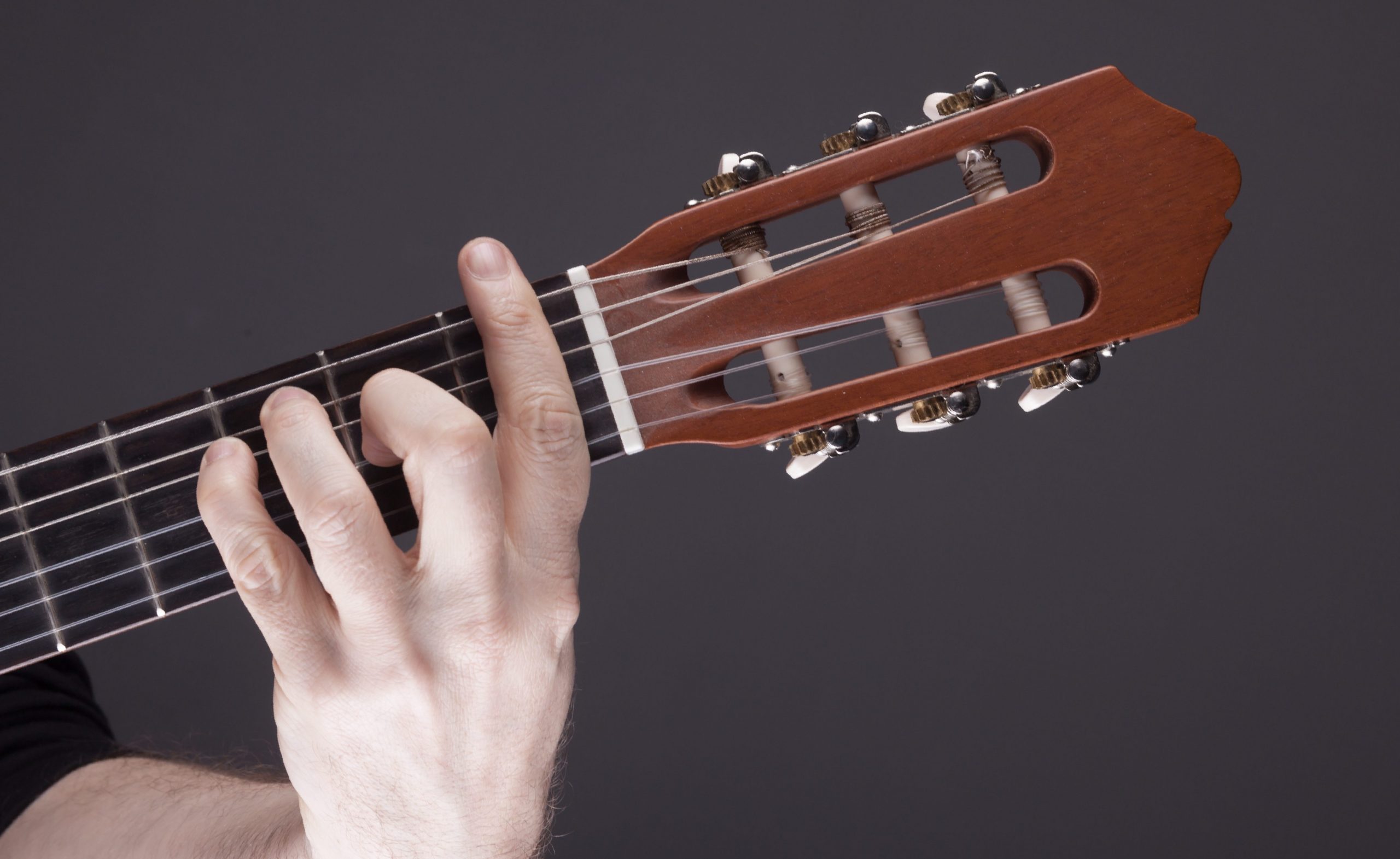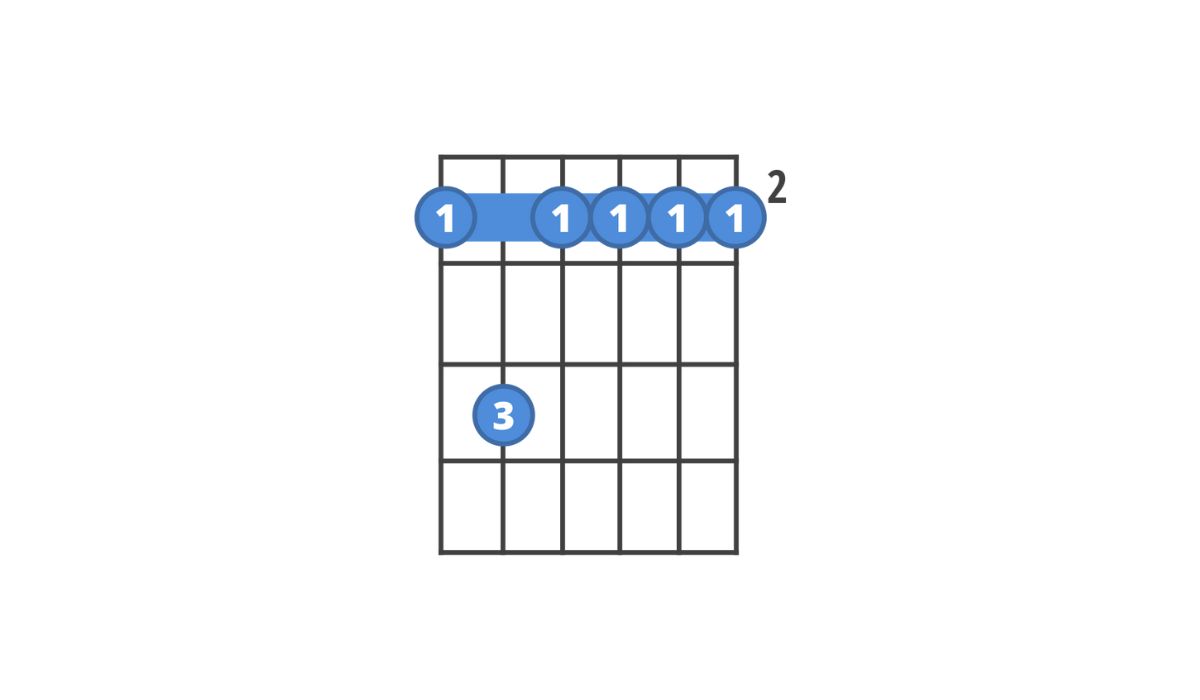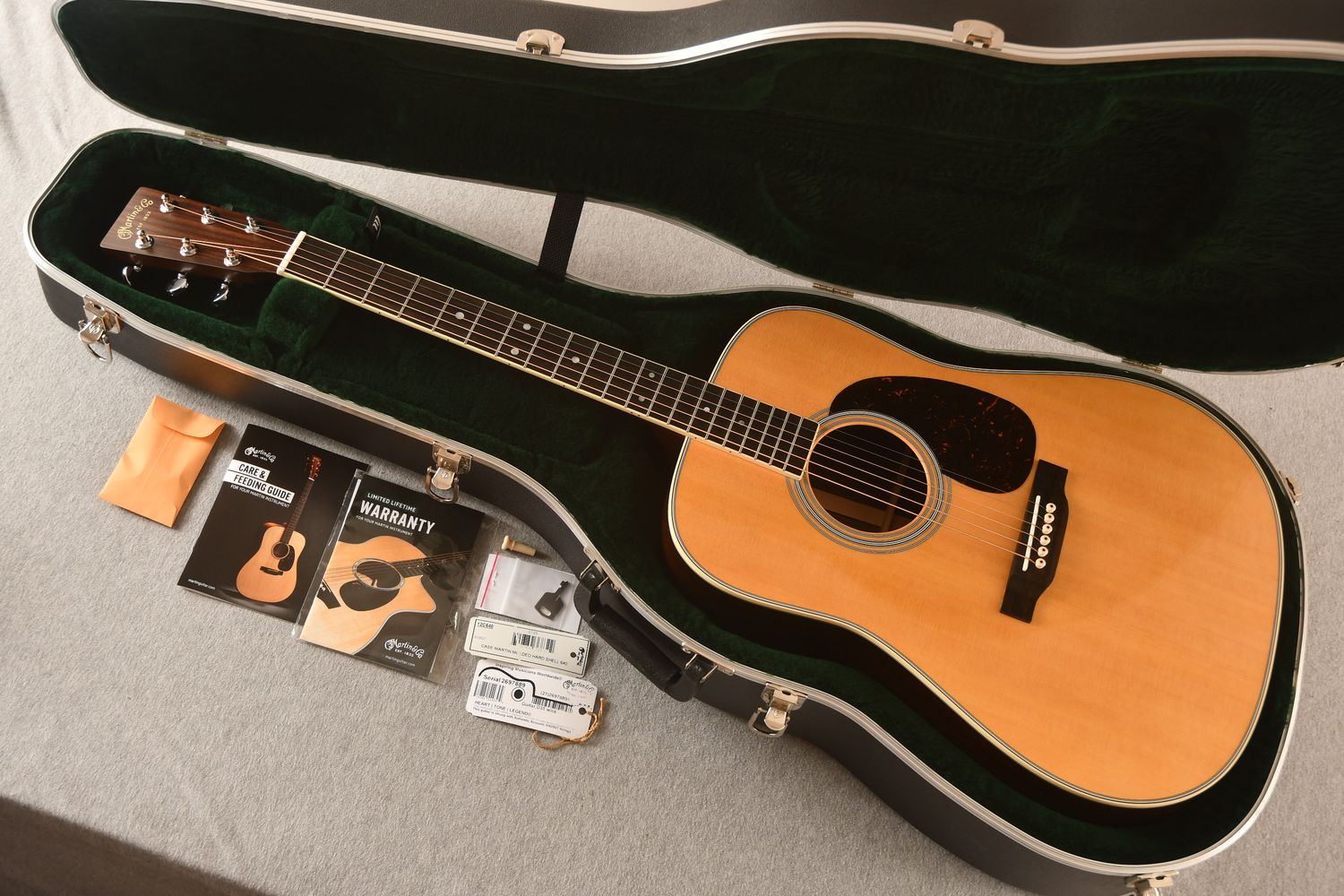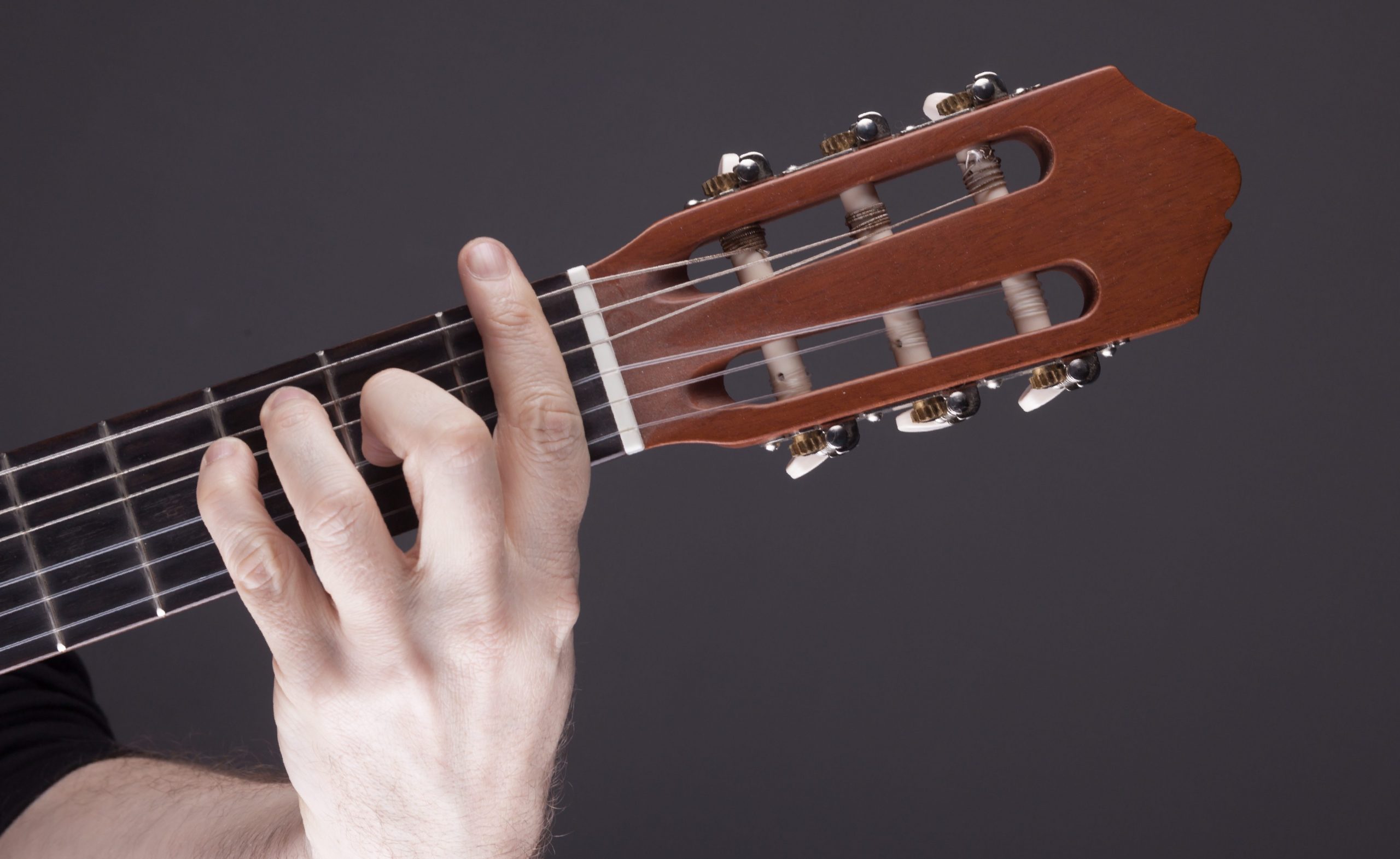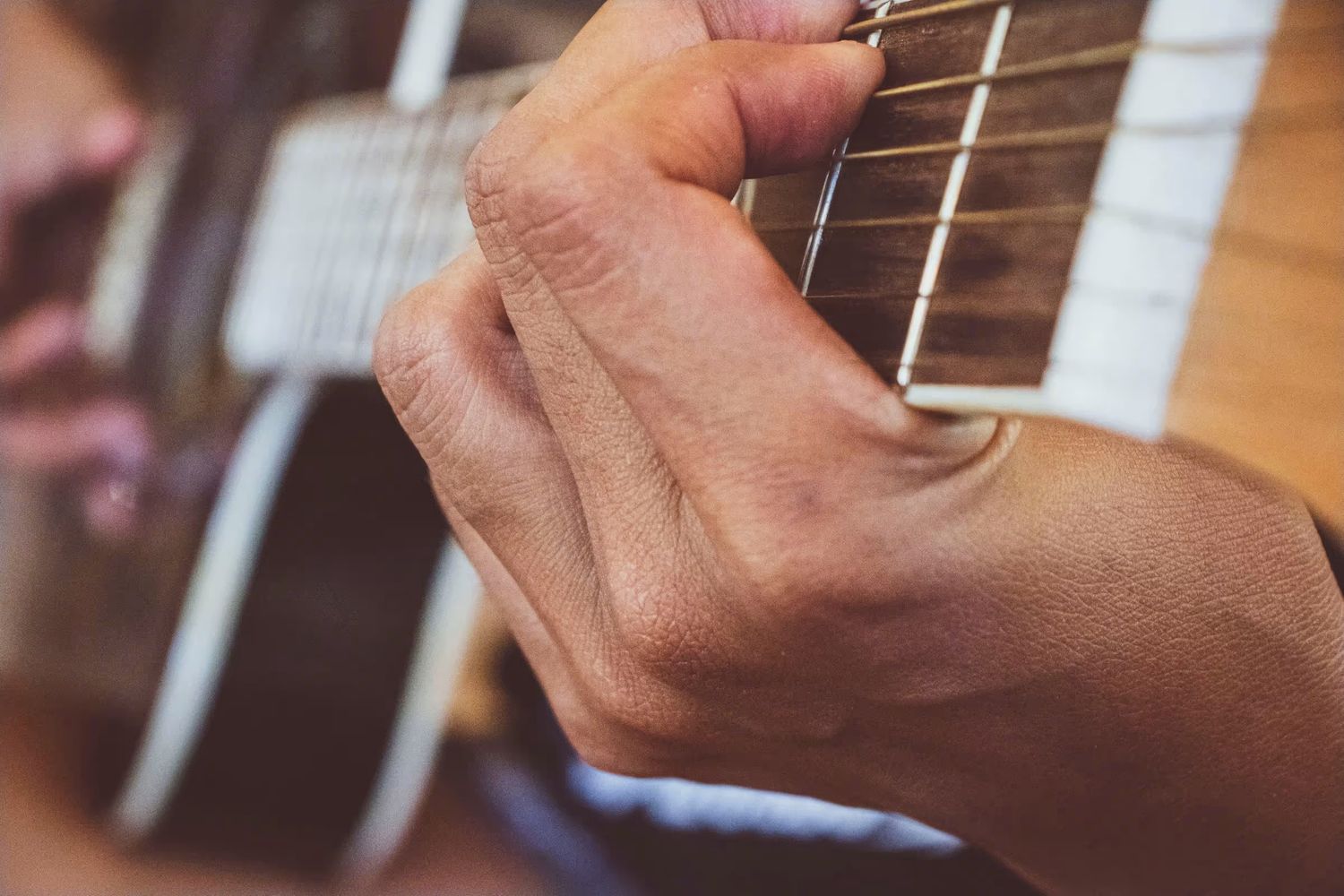Home>Production & Technology>Acoustic>What Is The F Chord On An Acoustic Guitar


Acoustic
What Is The F Chord On An Acoustic Guitar
Published: March 12, 2024
Learn how to play the F chord on an acoustic guitar with our step-by-step guide. Master this essential chord for your acoustic guitar playing.
(Many of the links in this article redirect to a specific reviewed product. Your purchase of these products through affiliate links helps to generate commission for AudioLover.com, at no extra cost. Learn more)
Table of Contents
Introduction
The F chord is a fundamental aspect of playing the acoustic guitar. It is a versatile and essential chord that forms the basis of countless songs across various genres. Mastering the F chord opens up a world of musical possibilities, allowing guitarists to expand their repertoire and play a diverse range of melodies and harmonies.
Understanding the F chord is crucial for both beginner and experienced guitarists. Its unique finger positioning and the rich, resonant sound it produces make it a significant milestone in a guitarist's journey. While mastering the F chord may initially seem daunting, with practice and dedication, it becomes an integral part of a guitarist's skill set.
In this comprehensive guide, we will delve into the intricacies of the F chord on an acoustic guitar. From understanding its structure and finger placement to exploring common variations and providing valuable tips for mastering it, this article aims to equip guitar enthusiasts with the knowledge and techniques needed to conquer the F chord.
Whether you are a novice seeking to enhance your chord repertoire or an experienced player looking to refine your skills, this guide will serve as a valuable resource. By the end of this article, you will have a deeper understanding of the F chord and the confidence to incorporate it seamlessly into your musical endeavors. So, let's embark on this enriching journey to unravel the nuances of the F chord and elevate our guitar playing to new heights.
Understanding the F Chord
The F chord is a fundamental component of acoustic guitar playing, and comprehending its structure and composition is essential for any guitarist. The F chord is a major chord and is comprised of three notes: F, A, and C. When played on the guitar, the F chord produces a rich, resonant sound that adds depth and character to musical compositions.
To form the F chord, the guitarist typically places fingers on specific frets and strings. The standard F chord is played by placing the index finger on the first fret of the B string, the middle finger on the second fret of the G string, and the ring finger on the third fret of the D string. This finger positioning allows the guitarist to produce the distinct sound of the F chord when strumming the guitar.
Understanding the F chord also involves recognizing its position within the musical scale. In the context of the C major scale, the F chord serves as the fourth chord, denoted as IV. This positioning within the scale is crucial for understanding chord progressions and creating harmonious musical arrangements.
Moreover, the F chord can be played in various inversions and voicings, allowing for versatility in musical expression. Different fingerings and fret positions can be employed to create alternative versions of the F chord, each with its own unique tonal qualities and applications in different musical contexts.
In addition to its musical significance, the F chord presents a physical challenge for many guitarists due to its barre chord nature. Barre chords require the guitarist to use a finger to press down multiple strings across the fretboard, demanding strength and dexterity. Understanding the intricacies of forming and transitioning to the F chord is essential for mastering this technique and expanding one's guitar playing capabilities.
By comprehending the composition, positioning, and variations of the F chord, guitarists can gain a deeper appreciation for its role in music and develop the skills necessary to incorporate it seamlessly into their playing. This understanding forms the foundation for mastering the F chord and harnessing its melodic potential to create captivating music on the acoustic guitar.
How to Play the F Chord
Playing the F chord on an acoustic guitar requires precise finger placement and a solid understanding of fretboard positioning. To begin, let's explore the standard way to play the F chord:
-
Positioning Your Fingers: Start by placing your index finger on the first fret of the B string, your middle finger on the second fret of the G string, and your ring finger on the third fret of the D string. This finger arrangement forms the essential structure of the F chord.
-
Finger Pressure: Apply firm and consistent pressure with your fingertips to ensure that each string rings out clearly when strummed. It's essential to maintain proper finger positioning and pressure to produce a clean and resonant sound.
-
Arch Your Fingers: Arching your fingers and positioning them close to the frets helps prevent muffled or buzzing sounds. This technique also facilitates smooth transitions between chords and enhances overall playing efficiency.
-
Strumming Technique: When strumming the F chord, focus on strumming from the D string downwards, ensuring that each string is sounded distinctly. This technique emphasizes the rich, full-bodied sound of the F chord.
-
Check for Clarity: After forming the chord shape and strumming, carefully listen to each string to ensure that they resonate clearly without any muted or buzzing notes. Adjust your finger positioning and pressure as needed to achieve optimal clarity.
As you embark on your journey to master the F chord, remember that consistent practice and patience are key. Initially, you may encounter challenges such as finger fatigue and muted strings, but with perseverance, these obstacles can be overcome. It's important to approach learning the F chord with a positive mindset and a willingness to embrace the learning process.
In addition to the standard F chord formation, there are alternative ways to play the F chord that offer unique tonal characteristics and ergonomic advantages. Exploring these variations can provide valuable insights into the versatility of the F chord and enhance your overall playing experience.
By mastering the art of playing the F chord, you'll not only expand your chord repertoire but also develop essential finger dexterity and fretboard familiarity. This foundational skill will serve as a springboard for tackling more complex chords and advancing your acoustic guitar proficiency. With dedication and perseverance, you'll soon find yourself effortlessly incorporating the F chord into your musical repertoire, adding depth and richness to your guitar playing endeavors.
Common Variations of the F Chord
Exploring common variations of the F chord unveils a spectrum of tonal nuances and ergonomic adaptations that cater to diverse playing styles and musical contexts. These variations offer guitarists the flexibility to choose chord voicings that best complement their compositions and playing preferences. Let's delve into some popular variations of the F chord:
-
F Barre Chord (F Major): The F barre chord, also known as F major, involves barring the first fret with the index finger and forming the E major shape with the remaining fingers on the fretboard. This versatile variation produces a bright and full-bodied sound, making it a staple in various musical genres.
-
F Major 7: By lifting the pinky finger from the standard F chord formation, the F major 7 chord is created. This variation introduces a subtle yet captivating tonal shift, adding a touch of sophistication to chord progressions and melodic sequences.
-
Fadd9: Incorporating the pinky finger on the third fret of the high E string while playing the standard F chord results in the Fadd9 variation. This embellishment infuses the chord with a sense of openness and warmth, making it a popular choice for creating ethereal and melodic passages.
-
F/A Chord: The F/A chord involves omitting the low E string from the standard F chord formation, allowing the A note to serve as the bass note. This variation produces a rich and resonant sound, offering a compelling harmonic foundation for chord progressions and arpeggios.
-
F Power Chord: Embraced in rock and alternative music, the F power chord consists of the root note (F) and the fifth (C) played on the low E and A strings. This stripped-down variation exudes raw energy and is often employed to add grit and intensity to guitar-driven compositions.
-
Fm (F Minor) Chord: Transitioning from the F major to F minor involves repositioning the fingers to create a melancholic and introspective tonality. The Fm chord adds emotional depth to musical arrangements and serves as a poignant harmonic element in various musical genres.
Exploring these common variations of the F chord not only expands a guitarist's sonic palette but also fosters a deeper understanding of chord construction and harmonic possibilities. Each variation offers a distinct sonic identity, empowering guitarists to infuse their musical creations with richness and complexity. By incorporating these variations into their playing repertoire, guitarists can elevate their musical expressions and embark on a dynamic journey of sonic exploration and creativity.
Tips for Mastering the F Chord
Mastering the F chord on the acoustic guitar is a rewarding endeavor that requires dedication, patience, and strategic approaches. As you embark on this musical journey, consider the following tips to enhance your proficiency and confidence in playing the F chord:
-
Consistent Practice: Devote regular practice sessions specifically focused on the F chord. Repetition is key to building muscle memory and finger strength, enabling you to form the chord shape effortlessly and transition smoothly between chords.
-
Finger Placement: Pay close attention to the placement of your fingers when forming the F chord. Ensure that each finger is positioned close to the frets, allowing for clear and resonant notes. Practice forming the chord slowly and deliberately, verifying that each string rings out distinctly.
-
Gradual Progression: Start by practicing the F chord in isolation before incorporating it into songs or chord progressions. Begin with simple strumming patterns and gradually increase the complexity as you gain confidence and proficiency.
-
Relaxation and Posture: Maintain a relaxed posture and hand position while playing the F chord. Tension in the fingers and wrist can impede fluid chord transitions and lead to fatigue. Focus on maintaining a natural and relaxed hand position to facilitate smooth chord changes.
-
Use of a Capo: Experiment with using a capo to simplify the F chord. Placing a capo on higher frets effectively raises the pitch of the guitar, allowing for easier chord formations. This technique can be particularly helpful for beginners as they build finger strength and dexterity.
-
Visualization and Mental Practice: Visualize the finger positioning and fretboard patterns of the F chord during your practice sessions. Mental practice can reinforce muscle memory and aid in mastering the chord shape away from the guitar, enhancing overall proficiency.
-
Patience and Persistence: Embrace the learning process with patience and persistence. Mastery of the F chord is a gradual journey, and it's essential to celebrate small victories along the way. Stay committed to your practice routine and acknowledge the progress you make over time.
-
Seeking Guidance: Consider seeking guidance from experienced guitar instructors or online tutorials. Professional guidance can provide valuable insights, personalized feedback, and targeted exercises to refine your F chord technique.
By incorporating these tips into your practice regimen, you can effectively master the F chord and integrate it seamlessly into your acoustic guitar repertoire. Embrace the challenges with a positive mindset, and remember that each practice session brings you closer to achieving fluency and confidence in playing the F chord.





